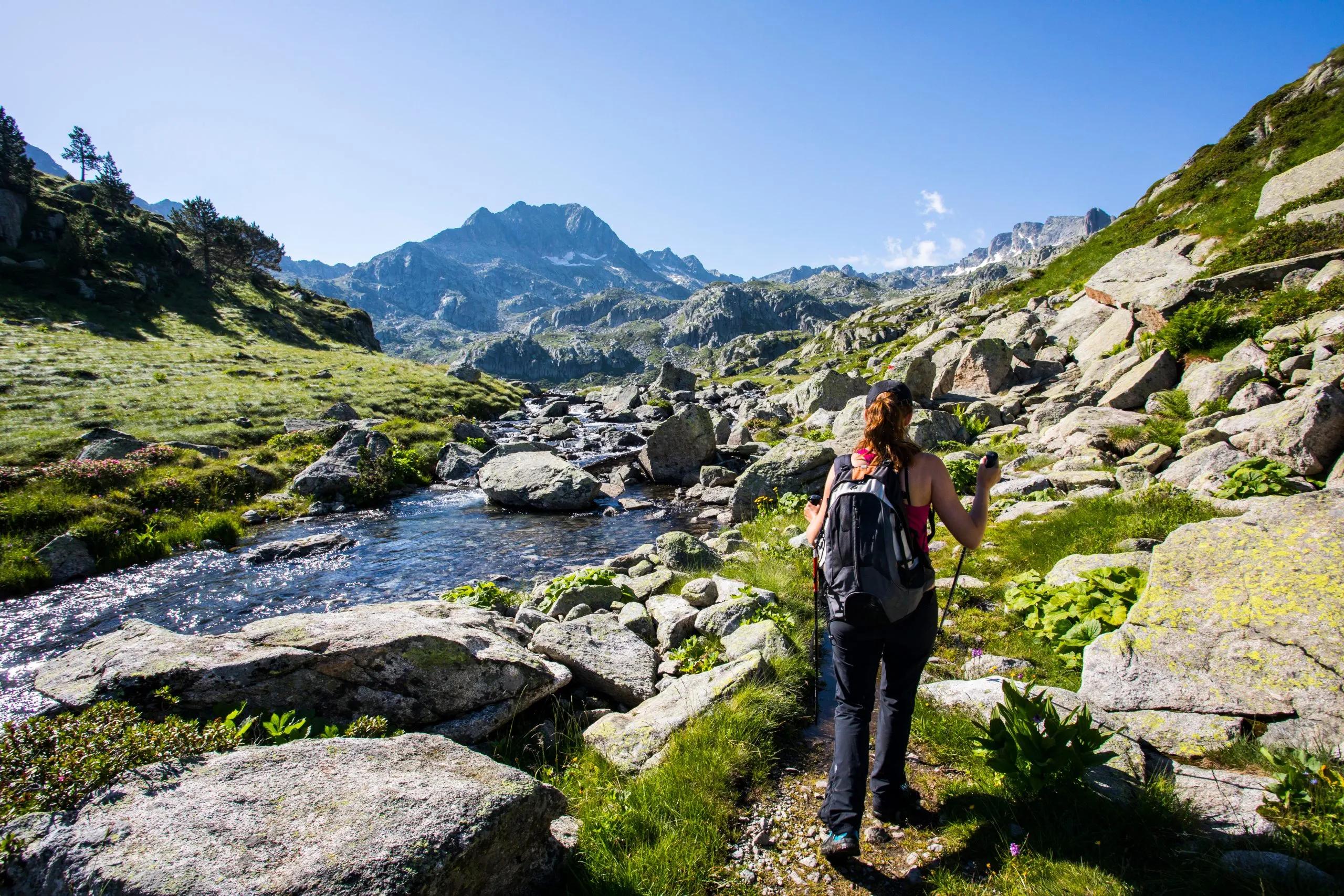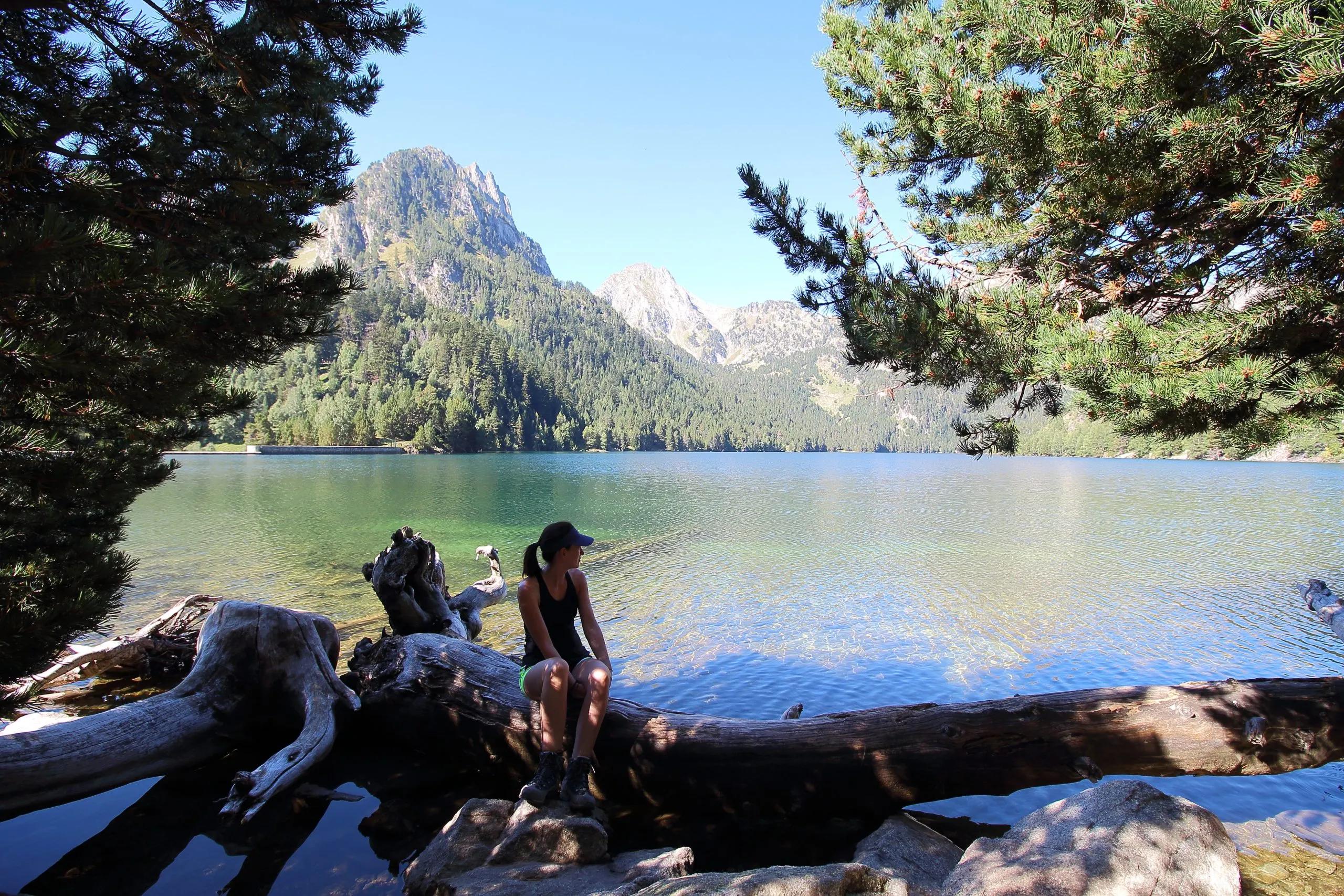7.75 km and 600 m of elevation gain











Carros de Foc Trail
7 days / 6 nights
|
Starting point
Espot
Finish point
Espot
Season
From July to September
Technical level
3/5
Fitness level
3/5
Tour type
Hut-to-Hut
Starting point
Espot
Finish point
Espot
Season
From July to September
Technical level
3/5
Fitness level
3/5
Tour type
Hut-to-Hut
Highlights
- Experience the rugged beauty of the Catalan Pyrenees on a family-friendly hut-to-hut hike
- Traverse a landscape of crystal-clear lakes, lush forests, and towering mountain peaks
- Explore Aigüestortes i Llac de Sant Maurici National Park
- Immerse in the history of the trail, created in 1987 by the guardians of the mountains
- Discover the serene beauty of numerous mountain lakes, including Estany de Mar and Estany de Saburo
- Capture the breathtaking views from El pas de l’Ós and other majestic mountain passes
Itinerary of the trip
FREE ITINERARY
Get Your Travel Itinerary
Loved the itinerary? Enter your email below, and we'll send a copy straight to your inbox.
What’s included in the price?
Self-guided
NOT INCLUDED
OPTIONAL EXTRAS
Guided
NOT INCLUDED
OPTIONAL EXTRAS
What to bring to the tour
- Hiking shoes/boots
- 25 to 45-liter backpack
- Base layer
- Sports T-shirts
- Hiking shorts
- Hiking water-repellent pants
- Waterproof jacket
- Midlayer
- Sports socks and underwear
- Leisurewear for evenings
- Down jacket
- Gloves
- Shade hat/cap
- Warm headwear
- Sunscreen
- Sunglasses
- Headlamp
- Hiking poles
- ID card or passport
- Snacks
- Cash
- Water bottles or hydration pack
- Sleeping liner
- Toiletries
- Toilet paper
- Small first aid kit
In the heart of the Catalan Pyrenees, the Carros de Foc trail awaits, offering an immersive experience in the natural splendor of Aigüestortes i Llac de Sant Maurici National Park in a blend of crystal-clear lakes, rugged mountain peaks, lush forests, and abundant wildlife.
Carros de Foc was born in 1987 when the guardians of these nine mountain huts decided to connect their worlds as an inside joke, creating a route that has since drawn adventurers from near and far.
Each step on this journey brings into view awe-inspiring landscapes, from the serene lakes like Estany de Mar and Estany de Saburo to the daunting yet exhilarating passes like El pas de l’Ós.
The trek is not technical and requires no climbing skills, making it accessible to all hikers, even families. Its circular nature and nine huts along the way mean the journey can be tailored to individual fitness levels and preferences.
Each hut, set in spectacular settings amid a land streaked with crystal-clear mountain lakes, offers a cozy bed, food, showers, and sometimes even Wi-Fi, ensuring a comfortable rest after a day of exploration.
We make sure that every detail is meticulously planned for you. From hut bookings to providing round-the-clock support and GPS navigation, we ensure a seamless experience. Our in-depth digital guidebook delves into the rich tapestry of Carros de Foc, offering insights and stories to enrich your journey.
Due to the high mountainous and relatively wild terrain of the Carros de Foc, luggage transfer is impossible, so you'll need to carry your belongings in a backpack but rest assured, the numerous huts along the route will provide ample food, water, and snacks.
If Carros de Foc calls to you, answer with an adventurous spirit and a heart open to the wonders of the Catalan Pyrenees!
Frequently Asked Questions
Ratings & Reviews

5.0 average rating

I had an absolutely wonderful experience with Hut to Hut Hiking. They were exceedingly responsive, patiently answering my many emails' worth of questions about itineraries, schedules, logistics, and the like. They helped to create an absolutely perfect trek according to the limited time I had and they provided helpful information for me to organize travel to and from the start and end points. Hut to Hut's communication is professional, their website is useful, and the itinerary and GPS tracking information they sent me once I paid/booked was flawless. The trails were easy to follow, Ride with GPS worked perfectly, and I was so grateful to have relied on a company to facilitate my route in a country where I was unfamiliar. I'm used to planning my own routes, but Hut to Hut Hiking's expertise and insight made the entire experience infinitely more pleasant.


We had a lovely hike today with our guide Klemen. He personalized the tour on our needs and interests, so that we saw places we wouldn't without his experience. The hike was a little bit slippery after the rain from the last days and it went a lot upwards, but it was totally worth it! Thanks again :)


Carros de Foc was an unforgettable experience. The loop took me through stunning high-altitude landscapes with glacial lakes, rocky ridges, and peaceful valleys. The huts were perfectly located and offered a great place to unwind after a full day of hiking. Anja’s recommendations on pacing and what to pack were spot-on, making the entire experience seamless. This trek is ideal for those who want to fully immerse themselves in the Pyrenees’ natural beauty.
I had an absolutely wonderful experience with Hut to Hut Hiking. They were exceedingly responsive, patiently answering my many emails' worth of questions about itineraries, schedules, logistics, and the like. They helped to create an absolutely perfect trek according to the limited time I had and they provided helpful information for me to organize travel to and from the start and end points. Hut to Hut's communication is professional, their website is useful, and the itinerary and GPS tracking information they sent me once I paid/booked was flawless. The trails were easy to follow, Ride with GPS worked perfectly, and I was so grateful to have relied on a company to facilitate my route in a country where I was unfamiliar. I'm used to planning my own routes, but Hut to Hut Hiking's expertise and insight made the entire experience infinitely more pleasant.


We had a lovely hike today with our guide Klemen. He personalized the tour on our needs and interests, so that we saw places we wouldn't without his experience. The hike was a little bit slippery after the rain from the last days and it went a lot upwards, but it was totally worth it! Thanks again :)


Carros de Foc was an unforgettable experience. The loop took me through stunning high-altitude landscapes with glacial lakes, rocky ridges, and peaceful valleys. The huts were perfectly located and offered a great place to unwind after a full day of hiking. Anja’s recommendations on pacing and what to pack were spot-on, making the entire experience seamless. This trek is ideal for those who want to fully immerse themselves in the Pyrenees’ natural beauty.
All available guidance options
Private Guided Solo
Experience the great outdoors on a private guided tour tailored just for you...
Private Guided Group
Get together a group of your hiking buddies and leave the rest to us! All you have to do is sit back, relax and enjoy a tour built around your group’s preferences. With an experienced guide accompanying you every step of the way, you’ll get the most out of your hike without having to stress about the details.
Self-guided
Are you looking for a good adventure and limitless flexibility? Then you should try out a self-guided tour, perfect for independent explorers who want to set their own pace. Without the need to stick to a group schedule, you’re free to linger at scenic viewpoints while the logistics are taken care of in advance.

HASSLE-FREE
We handle itineraries, accommodations, and anything else you prefer not to deal with, so you can enjoy a carefree hike.

BOOK WITH CONFIDENCE
We are a financially protected company, fully bonded and insured, keeping your money safe and allowing you to travel with confidence.

TRIED & TESTED ADVENTURES
Only the best hut to hut hikes in Europe, cherry-picked by our local team with an in-depth knowledge of the region.

UNBEATABLE SUPPORT
Our 24/7 customer support is where we show our passion, bringing you a better experience by making your well-being our number one priority.












































